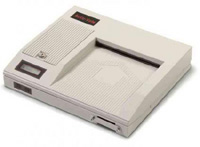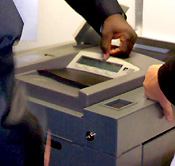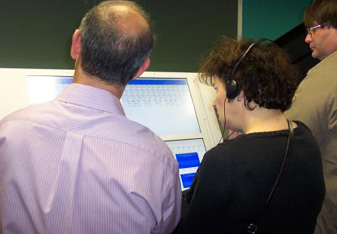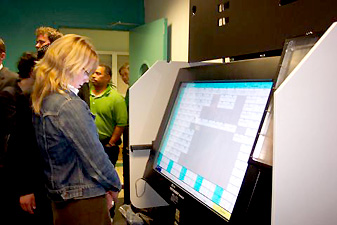More than four years after Congress passed the Help America Vote Act, there are four voting machines competing for the honor of being New York City's exclusive new voting system.
Over the last few weeks, the manufacturers have been demonstrating these machines to the public throughout the five boroughs; New Yorkers were afforded the opportunity to test the machines and provide feedback at two public hearings conducted by the New York City Board of Elections.
All four machines have voter-verified paper audit trails. They are either optical scan machines, much like the fill-in-the-bubble scantron system used to administer standardized exams, or direct recording electronic machines (DREs), more closely resembling ATM cash machines.
One of the following machines will replace the city's treasured lever machines, called Shoup 3.2, which have been in use since 1962. When this will happen, however, is unclear. While most other states scrambled to meet the 2006 deadline for new machine implementation, New York State did not leave the counties, or the vendors, with enough time to do so. New York City is now in the unenviable position of having to prepare for the nightmare scenario of unveiling new machines in 2008 -- in the midst of an open election for president.
 Diebold Optical Scan with Ballot Marking Device
Diebold Optical Scan with Ballot Marking Device
Year Company Founded: 1859
States with counties that use their systems: Georgia , Maryland , Alaska , Arizona , Ohio.
Company Website: www.dieboldes.com
The Diebold Optical Scan machine scans and counts voter-marked paper ballots that are filled out by voters in a private booth at the poll site. Voters are notified when their ballot contains "overvotes" (when more than the allowed selections have been made in an individual race) or "undervotes" (when a voter has not marked a choice of all their selections in an individual race.) Undervotes and overvotes are often collectively referred to as residual votes. The voter can choose to eject their ballot and correct any residual votes found on the ballot or submit it as is.
The system includes a ballot marking device for voters who are not able, or choose not, to fill out their paper ballot by hand. The ballot marker, through one of several technological advances, allow disabled voters to record their vote in private.
 ES&S Model 100 Precinct Ballot Counter (Optical Scanner) with Ballot Marking Device
ES&S Model 100 Precinct Ballot Counter (Optical Scanner) with Ballot Marking Device
Year Company Founded: 1969
States with counties that use their systems: Illinois , North Dakota , South Dakota , Oklahoma , Rhode Island , Nebraska , Alabama , North Carolina , and New Mexico , California , Florida , Texas , Hawaii
Company Website: www.essvote.com
The ES&S model functions much like other optical scanners allowing voters to fill out a paper ballot and feed through a scanner to be tabulated. The ES&S model features an LCD display that notifies the voter if an overvote or undervote has been made on the ballot. In the case of an overvote the voter is able to submit the ballot as is, thereby voiding their vote for that race, or eject the ballot and receive a second ballot to make their selections again.
The ES&S machine turned out to better communicate residual votes to voters by displaying the number of undervotes that appeared on the ballot. After scanning his or her ballot, if the machine found undervotes, the voter is prompted to either eject the ballot to make corrections or continue on leaving the undervote as is. In addition, the machines can be programmed to go through each of the undervotes on the ballot, allowing the voter to eject it or continue on. This feature allows voters to select to undervote on a specific race without unintentionally undervoting on other races that may follow.
Sequoia's AVC Advantage Plus Full Face DRE
Year Company Founded: More than 100 years ago
States with counties that use their systems: Florida, Washington , California and Colorado
Company Website: http://www.sequoiavote.com/index.php

Sequoia's DRE model for New York City features a four panel touch screen voting machine. Voters make their selections, which are identified by a check mark, and can review their ballot on a paper receipt before it is cast. The voter is notified of any undervotes they may have made as they are taken to a display with all of their selections for review; undervoted races are highlighted in red. At that time the voter can go back to the ballot and make corrections. Like the lever system, voters cannot overvote in a race, as they have to deselect their choice in order to make a new one.
One of Sequoia's strongest features is the way the VVPT is marked to distinguish cast ballots from invalid ballots. The Sequoia DRE marks spoiled ballots by printing VOIDED at the top of the receipt after a voter chooses to make corrections to their selections. To decrease the likelihood of human error in the event of a hand paper recount, differentiating voided and valid votes with a quick and easy identifier not only makes hand counting more accurate but helps voters feel more confident that there vote is represented accurately.
Avante Vote-TrakkerTM EVC308-FF DRE
Year Founded: unknown
States with counties that use their systems: California ,
Company Website: www.avantetech.com

Avante's full face DRE displays the ballot on a single touch screen panel. Voter's choices are highlighted in yellow, and before casting their ballot voters can review their choices on a paper receipt. Undervotes are highlighted in pink before the voter casts their ballot, allowing for corrections to be made. As the voter makes all of their possible choices in undervoted races, the windows are automatically un-highlighted, letting the voter keep track of their undervotes. The system eliminates overvotes by automatically updating voters' choices. If a voter already selected a candidate for governor and makes a correction, the new selection is highlighted yellow and the old selection is un-highlighted.
Unlike the Sequoia model, the Vote-Trakker identifies invalid ballots with ballots cast by using distinctive numerical codes. The Avante system of separates ballots using replacement (1) or replacement (2) with (1) or (2) at the end of the voters numerically coded ballot rather than firmly noting a valid vote. During a hand recount it seems these receipts would be more susceptible to human error, even if using the program within the machine that identifies valid and invalid ballots.
Doug Israel is policy director, and Andrea Senteno program associate, at Citizens Union Foundation, which publishes Gotham Gazette. Â




